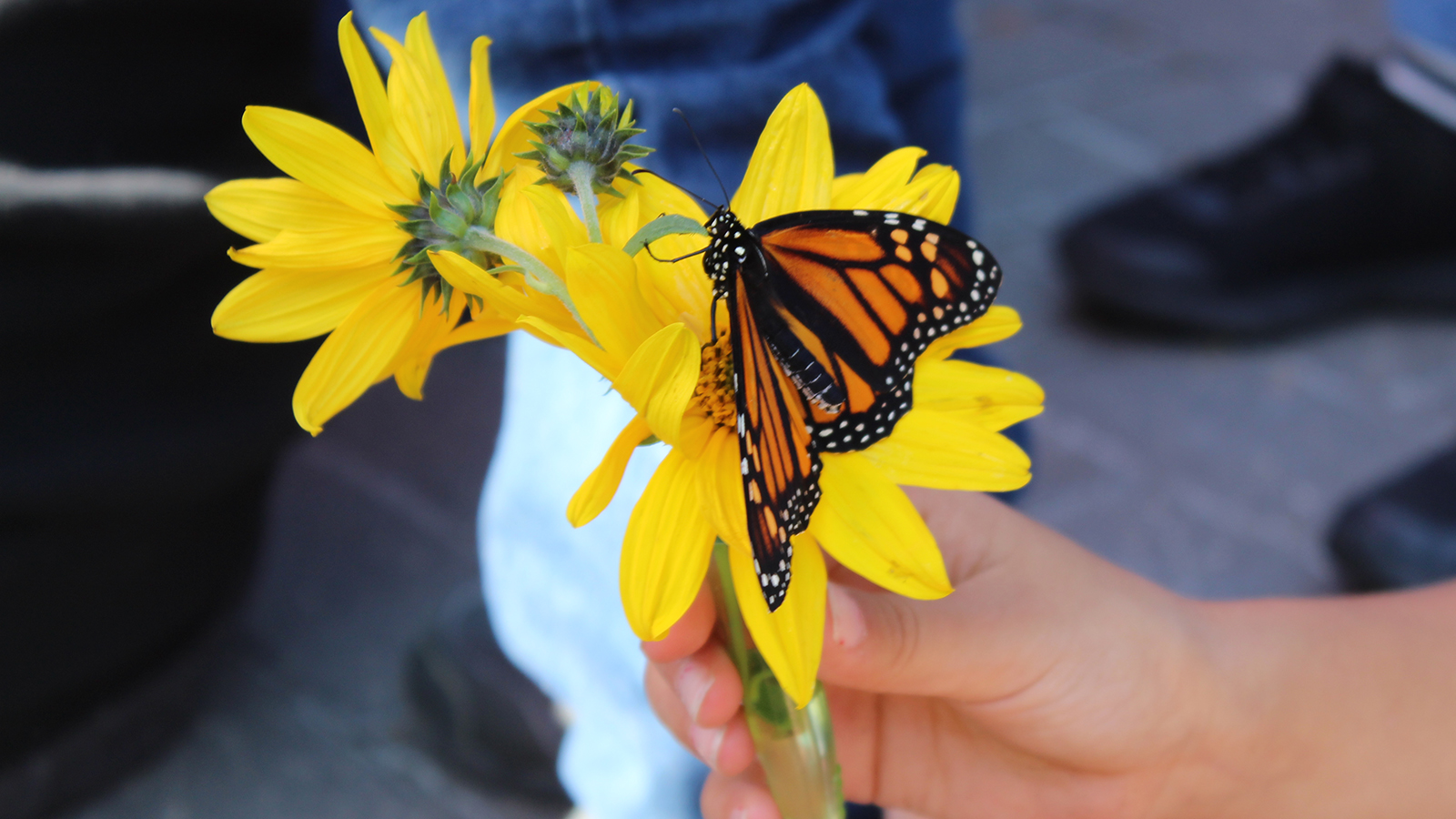The monarch butterfly, easily recognizable with its iconic black and orange colouring, is a welcome summer sight in gardens and natural environments across southern Manitoba. Every year, as summer comes to an end, Manitoba-born monarchs embark on an epic journey, flying over 3,000 km south where they spend several months overwintering in central Mexico.
Sadly, this once prolific species is suffering from severe population decline. Conservation organizations across North America – including the Assiniboine Park Conservancy – are working to protect monarch butterflies and their habitat. Keep reading to learn more about this fascinating species and how you can help!
Range
Monarch butterflies are found across North America from central Mexico to southern Canada. There are two migrating populations separated by the Rocky Mountains. The smaller western population overwinters in California and the Baja peninsula. The much larger eastern population overwinters in central Mexico. A third non-migratory population can be found in the states of Georgia and Florida.
Life Span
Monarch butterflies live two to six weeks, except for the last generation of the year, which can live for up to eight or nine months. This is the generation that makes the impressive journey south to the overwintering grounds. While one generation of butterflies makes the journey south, several generations may participate in the return trip north in the spring. Most monarchs that reach Canada are the great-grandchildren of those that left Mexico!
Threats
Monarch butterflies are susceptible to the harmful impacts of climate change, road kill, disease, industrial activity, and pesticide use, but one the biggest threats to their survival is loss of overwintering habitat. Monarchs overwinter in high elevation forests, gathering in dense groups on large trees for months at a time during a period of hibernation known as diapause. Due to many factors, their overwintering habitat has been shrinking, a trend that could be a limiting factor for the survival of monarchs.
Conservation Status
Over the past two decades, counts of overwintering monarchs have recorded steep declines. This winter, only 1,914 butterflies were counted during a survey of 246 monarch overwintering sites in California and the Northern Baja coast. This number represents a shocking 99.9% decline for the western population since the 1980s. Similar, though less severe, patterns of decline have been observed in the larger eastern population.
In Canada, monarch butterflies are currently classified as a species of Special Concern, but there is a recommendation that the classification be changed to Endangered. In the U.S., they are recognized as a candidate species for listing under the Endangered Species Act. The International Union for Conservation of Nature lists them as Near Threatened.
What is the Assiniboine Park Conservancy doing to help?
The Assiniboine Park Zoo is an accredited member of the Association of Zoos and Aquariums and the Monarch Saving Animals from Extinction (SAFE) program, a group of experts working collaboratively to maximize the potential of zoos and aquariums to address these threats and further advance existing conservation efforts. SAFE program partners are actively engaged in education and awareness, research, and conservation efforts in the field. For example, one member of the group is working to provide local people who live near Mexican overwintering sites with alternative fuel sources to reduce deforestation in the area.
Here at Assiniboine Park, we are working to educate our members, visitors, and community about the importance of creating and protecting pollinator habitat. We have increased the amount of native plantings and naturalized areas around the Park and Zoo and developed collaborative relationships with organizations such as the Monarch Teachers Network. We have also participated in tagging research, which helps scientists track and analyze migration behaviour, and scientific testing to understand disease transfer among monarchs.
How can you help?
- Plant native milkweed in your garden – There are no monarchs without milkweed. Adult monarchs will only lay eggs on milkweed, which also happens to be the singular food source for monarch caterpillars. There are several milkweed varieties that will grow in Manitoba. It is important to select a native milkweed species based on your particular growing conditions. Non-native tropical milkweed is linked to higher transmission of disease.
- Avoid using chemical pesticides – Pesticides designed to eliminate one type of insect can unfortunately be harmful to others. There are planting strategies and other less invasive methods that can be used in place of pesticides.
- Enjoy from a distance and don’t bring them home – As tempting as it may be to watch a monarch caterpillar transform into a beautiful butterfly, please don’t bring them into your home. There is emerging evidence that doing so may actually contribute to disease spread and some evidence that home-reared monarch do not migrate as well as wild individuals. It is best to observe caterpillars and butterflies from a distance in their natural environment.






